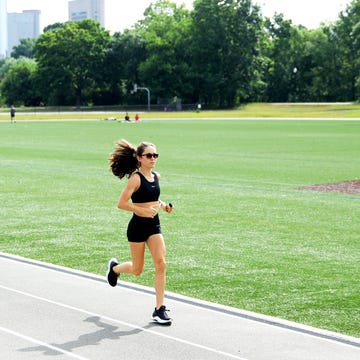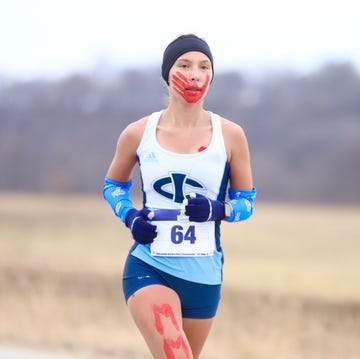Sydney Sutherland, a 25-year-old living in Arkansas, disappeared August 19, 2020, while on a run. Her body was discovered two days later, after local farmer Quake Lewellyn reportedly raped and murdered her. Sutherland’s family mourns the loss of their “Sassy,” a proud nurse, mother, and fitness lover.
Rosalie Fish Will Advocate for MMIW at UW: Eliza Fletcher, 34, Join Runners World; Mollie Tibbetts, 20, Watch NOT TODAY, a Film From Runners World; Wendy Martinez, 35, was stabbed during a run in Washington D.C. that same year; Vanessa Marcotte, 27, was killed near her mother’s home in Princeton, Massachusetts, in 2017; Black Women Are Running for Resistance, 31, was shot four times outside of Detroit in 2016; and Karina Vetrano, 30, was raped and killed on a run in Queens, New York, in 2016.
Sutherland’s murder comes with an infuriating refrain: that women should change their routines—or even give up running altogether—in the name of safety. Comments on Sutherland’s now-memorialized Facebook page include: “I cannot believe she went for a jog solo,” and “If only you had done this [at-home workout Sutherland posted] instead of going for a jog.”
As a woman runner, I’ve heard similar sentiments for decades: Don’t run alone. Don’t run at night. Don’t take unfamiliar routes. Don’t. Don’t. Don’t.
Give A Gift ABC are putting the responsibility on women to “avoid baggy clothes and ponytails,” so men can’t grab them, and instead wear “clothing that's form-fitting, that doesn't have a hood...and opt for hair in a side braid.”
In service journalism, advice should be practical, surprising, and easy for most people to follow. The ABC story attempts to do this, but it has one fundamental flaw: It’s advising the wrong people—women. The correctives should be directed at violent men.
“People often blame victims, because it makes those people feel less vulnerable and more in control,” says Callie Marie Rennison, Ph.D., a professor and director of equity at the University of Colorado, who studies violence against women. “As if they would have done something to avoid the situation.”
In the grand scheme of things, running is still a safe activity. Almost 60 million Americans enjoyed the sport in 2017, and by all estimates, that number is up thanks to 2020’s new social-distancing norms. And keep in mind: “A woman is at greater risk of being assaulted by an intimate partner at home than on a run by a stranger—so where are we supposed to go?” Rennison asks. “The problem isn’t women or what we’re doing.” She adds: “If I see one more Facebook meme about the ponytail, I’m going to throw myself to the ground.”
I feel the same. I’m not waiting for a friend’s schedule to clear up so they can chaperone my run, and I’m not wearing my hair in a side braid, either. Do you know how annoying it is to have a giant clump of hair bouncing on your shoulder with every step? It’s like a leaky faucet, except every bounce reminds you of the concessions you need to make in order to be a woman in a public space. And to think, many of us run as a means to reduce stress!
Of course, some women have no problems with side braids, or giving up their favorite hoodie, or jogging with a partner, but that’s not the point. The point is this: “We need to make larger changes, and one of those changes is moving the focus from what women need to do to avoid assault and instead teach men not to assault women,” says Rennison.
A starting point, Rennison says, is to make it easier for people to seek treatment for mental health, rage, and drug and alcohol issues. That means making programs more accessible to people at different income levels and removing the stigma that says “real men” don’t seek help for their problems. Yeah, these are big tasks—certainly bigger than any one woman's styling choices—but it’s the only way real change happens.
I’m not saying we, as women, should ignore the reality that we are vulnerable to attack. I’m not above caution: I wait until the sun rises before I lace up, I don’t run at night, and I don’t post my go-to routes on social media. But where do we draw the line? If a guy grabs a runner’s side braid, should we try shaving our heads next? No. We need to change the narrative about how to prevent violence against women, because I can assure you, it has nothing to do with my ponytail.













